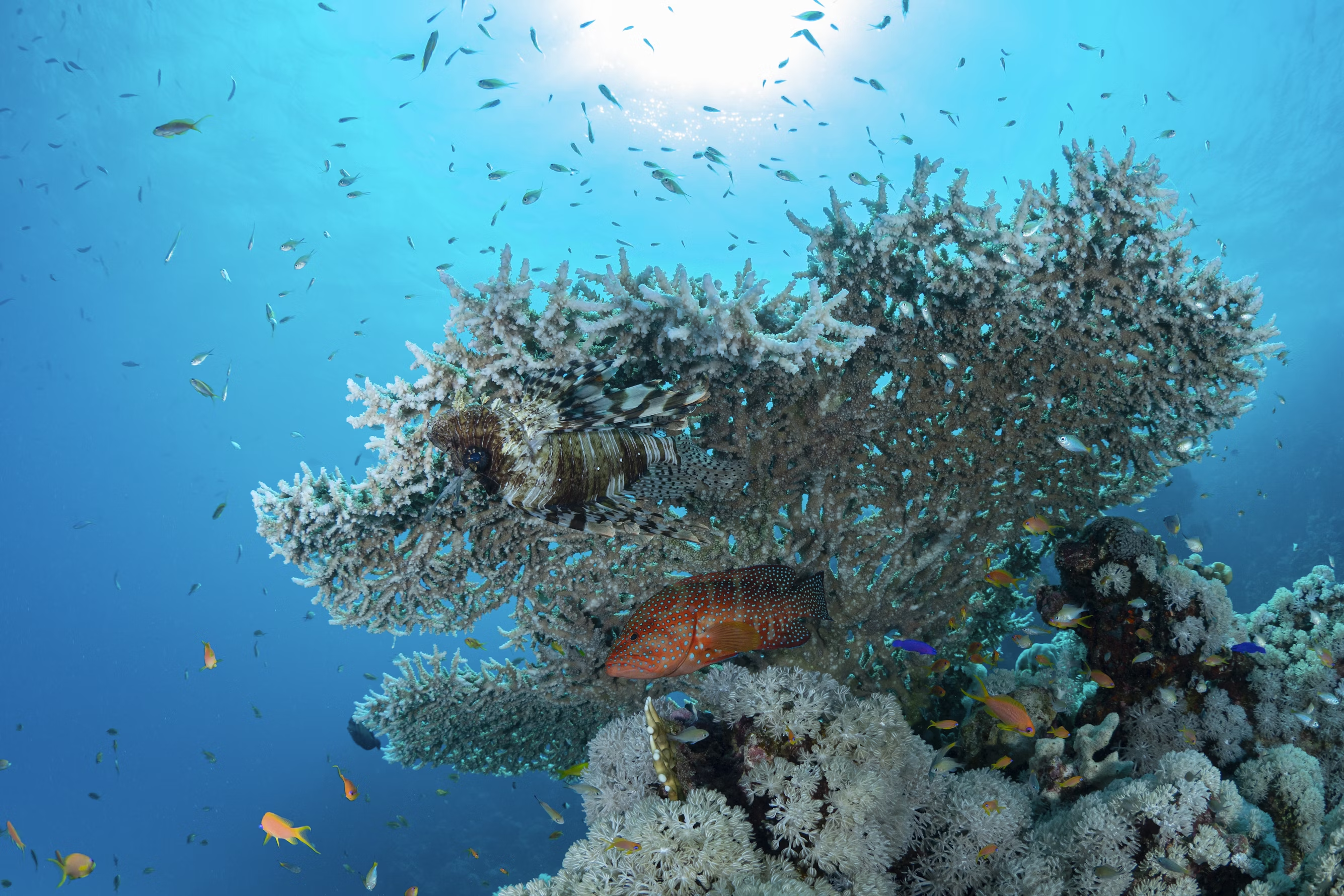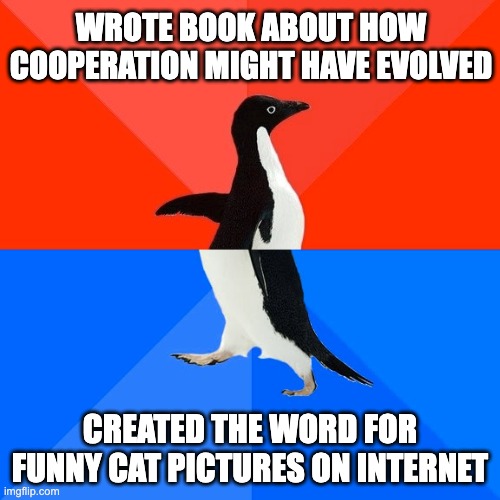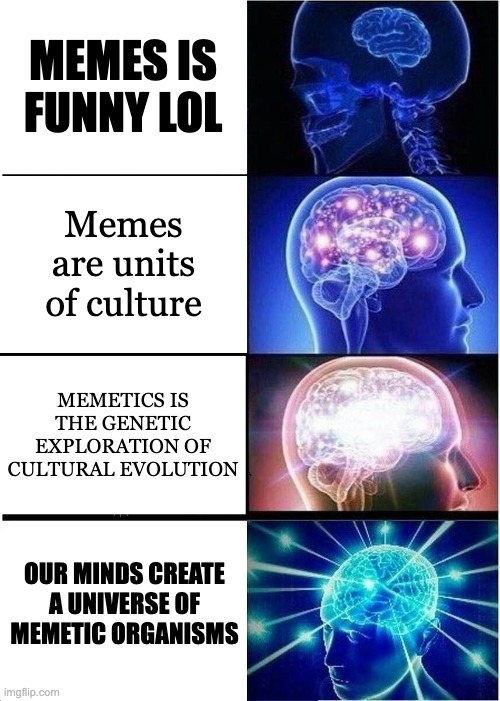
Are memes alive?
The common understanding of the word “meme” is that it’s an image macro, you modify a picture known to represent a feeling or situation you identify with and apply your current situation to that with some spicy text. If you make the text spicy enough it gets likes and reposts and you feel good about your contribution to the world. Especially if the post goes viral and millions of people see it. This is a mostly valid but narrow usage of the original idea of “meme” that Richard Dawkins coined in his 1979 book The Selfish Gene. Dawkins was using a biological metaphor for the spread of ideas and posited the atomic unit of “meme” as the analog to “gene” from genetics. That through natural selection genes would be selected for based on their evolutionary fitness. It’s amusingly appropriate that this idea of what “meme” means has mutated and drifted in the 46 years since.

Changes in the world in the last decade–particularly around propaganda, disinformation, rhetoric, and social media–has got me thinking hard about what makes ideas spread and the environment in which they do. I got to watch as the word “woke” went through changes in the last 20 years and the history of the word is interesting.
-
1940s: “Woke” originates in African American vernacular to mean awake to racial injustice. Lead Belly uses “stay woke” in reference to the Scottsboro Boys.
-
1971: In the play Garvey Lives!, a character says: “And now that Mr. Garvey done woke me up, I’m gon’ stay woke. And I’m gon’ help him wake up other black folk.” Reinforces its usage in the context of political and racial consciousness.
-
2008: Erykah Badu popularizes the phrase in her song Master Teacher–“I stay woke.” At this point, the meme is alive but contained within Black cultural spaces.
-
2014: The Ferguson protests and rise of Black Lives Matter (BLM) push “stay woke” into wider usage as a signal of political awareness, especially around systemic racism. This is the high-virality phase of the meme.
-
2017: The Oxford English Dictionary adds “woke” to its lexicon, meaning “alert to injustice in society, especially racism.” This is when it enters mainstream institutional consciousness.
-
2018–2020: Right-wing commentators begin to use “woke” as a slur–equating it with political correctness, oversensitivity, or elite moral signaling. The meme is being hollowed out and turned against itself.
-
Now: The derogatory usage of “Woke” has almost completely subsumed the original meaning and many proponents of its original meaning have abandoned it.
You can see that the word’s usage, meaning, and spread have changed over time. There an incubation period, a viral spread, mutation, and a sort of death. Dawkins was on to something, seeing culture as having biological properties. This got me thinking, is there a biosphere of culture? An ecology of mind?
The Noosphere

Noosphere might sound a sci-fi concoction , but it has been around for over a century. It was coined in the 1920s by French philosopher Édouard Le Roy and developed further by Jesuit priest and paleontologist Pierre Teilhard de Chardin. They expanded upon the concepts of geosphere and biosphere with a third layer: the Noosphere, from the Greek nous, meaning mind. It was meant to describe the sphere of human thought, a collective realm of consciousness and knowledge that emerged as a new evolutionary layer once life began to think about itself.
For them, the Noosphere wasn’t just a metaphor–it was a literal stage in the Earth’s development, driven by the growth of communication, science, philosophy, and culture. Over time, the term has taken on more metaphysical as well as metaphorical meanings, especially in digital contexts. Today, I’m using it in a specific way: not as a mystical hive-mind or spiritual field, but as the ecological space in which ideas live, mutate, and die. It is the cognitive habitat of cultural evolution. Just as the biosphere sustains biological organisms, the Noosphere is the environment in which ideas live.
Let’s take a moment to state the definition of meme I’m proposing here:
Meme (noun): A heuristic identity representing an idea in motion–semi-autonomous, non-conscious, and animated by transmission between minds.
That is dense and abstract so let’s unpack that a little. You probably have an understanding of what data is. Some record or fact stored in the world in a way that a human can extract meaning and understanding from it. A fact isn’t “alive”, it doesn’t change–though what we believe about facts may change. That interaction when data turns into understanding is important, that’s what animates knowledge into something in motion, something being thought about, something given importance and meaning.
You read these dead words on this page and they’re coming alive in your brain (I hope), and if you spread them to others they animate further (I also hope). As ideas animate into the web of human minds they move about and mutate as each person brings their past experiences, understanding, literacy, and synthesis to the table. With enough movement ideas can develop there own kind of identity. This sounds animistic but you yourself are a colony of unthinking cells that in aggregate do think. That’s what happened with “Woke” above. That’s not to say that the “Woke mind virus” is an animal in concrete terms, but it is a kind of cognitive colonial lifeform in abstract. A coral reef or jellyfish is made out of countless independent organisms with no centralized mind but it still lives and can act as such. And like a coral reef, “woke” is as much an organism as it is a place where other organisms live. Some parasitic, some symbiotic, and some just adjacent. Conservative memes moved in and killed the coral and now live in the dead husks of the original meaning but that happens in real reefs too.
The metaphor isn’t perfect but I think it’s fertile ground for exploring how knowledge and culture change, grow, and atrophy. We’ve established that data isn’t a memetic organism–it’s inanimate–but data is a sort of food that memes live on (true or not). The noosphere can be healthy in areas and struggling in others as data loss, human death, and parasitic memes destroy meaning.
That opens the door to all sorts of nuance:
- Some memes are viruses (parasitic, fast-spreading, destructive)
- Some are mutualists (they thrive because they benefit hosts–e.g., moral frameworks)
- Some are necrotic (still around, but decaying)
- Some are symbiotic, like religions, where memes coalesce into memeplexes and co-evolve with institutions and communities
- Some are epiphytes, memes that only exist by attaching to others (e.g., memes about memes)
And just like with life, there’s no hard border between alive and not-alive–there are:
- dormant spores
- fossilized beliefs
- viral fragments
- dead ideologies that still shape terrain
Some of these can revive or just become food for new memes as new minds discover and systhecise them.
That’s the Noosphere as I see it: not a mystical cloud of collective consciousness, but a living, tangled ecosystem of ideas–some helpful, some harmful, many just trying to survive. Memes move through us, shape us, and sometimes outlive us. Understanding their behavior won’t stop the chaos, but it might give us better tools for navigating it–and maybe even curating a healthier cognitive habitat along the way.
References
- What is the history of the word ‘woke’ and its modern uses? - The Independent. 22 January 2021
- The Selfish Gene Richard Dawkins. 1976
- a large group of fish swimming over a coral reef Photo credit Pascal van de Vendel